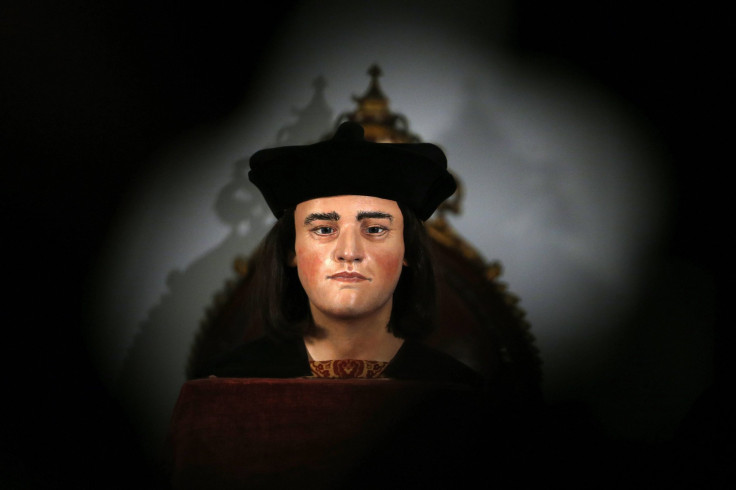Genome Of King Richard III Will Create ‘Contemporary’ Portrait Of 15th Century Monarch

King Richard III, the infamous monarch who ruled England 530 years ago and became the deformed villain in Shakespeare’s eponymous 16th-century play, is getting his portrait done with some help from modern technology. Scientists are looking to map the king’s genome using DNA from his remains, which were discovered in 2012 under a parking lot in Leicester.
If the genome sequencing is a success, it will make Richard III the first historical figure to have his DNA mapped in this way, according to CNN. Little is known about the 15th-century monarch’s appearance, aside from artists’ renditions of him that were done long after his death in 1485. The project could reveal intricate details about the face behind the legend, right down to the color of his eyes and hair.
"There are no contemporary portraits of Richard," Turi King, a geneticist at the University of Leicester who will lead the project, said in a statement. "All the portraits that exist postdate his death by about 40 to 50 years onwards. So it's going to be interesting to see what the genetic information provides in relation to what we know from the portraits."
As CNN noted, many portraits of Richard III were painted in an unflattering light. He was branded after his death as a Machiavellian villain whose ascension to power was marked by bloodshed, including the murder of his two little nephews. This image was fueled by pro-Tudor propaganda that sought to legitimize his successors’ right to the throne.
Mapping the king’s genome will give us an idea of just how accurate the centuries-old portraits really were.
Geneticists have previously sequenced the genomes of several ancient people, including Otzi the iceman, whose 5,000-year-old remains were discovered in 1991 on the Alpine border between Italy and Austria. As The BBC notes, scientists also mapped the DNA of a 4,000-year-old Greenland Inuit, a 7,000-year-old Spanish hunter-gatherer and several Neanderthals.
“Sequencing Richard III’s genome will not only give us a unique insight into the past, but have a profound impact on the way we think about disease and heredity in our own genomic age,” Dan O’Connor, head of medical humanities at the Wellcome Trust, which is funding the project, said in a statement. “By making this genome available to all, we will ensure that we can continue to learn about Richard’s past – both personal and historic – even once his remains have been interred.”
Sequencing King Richard III’s genome will cost about £100,000, or about $165,000 USD. That’s just a fraction of what it cost to sequence the DNA of the first human genome in the 1990s. That project took 13 years and came with a price tag of about $1 billion, according to Live Science.
© Copyright IBTimes 2024. All rights reserved.






















